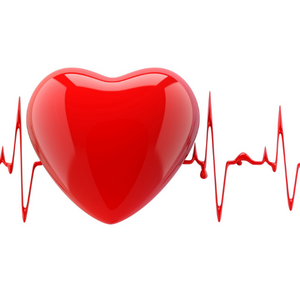Written by Beverly Elliott, MSN, ANP-C, CCDS
Typically, our heart beats in a regular "rhythm" between 60 and 100 beats per minute. It is regulated by a specialized group of cells called the sino-atrial node (aka the natural pacemaker of your heart) located in the top right chamber of the heart, or right atrium. This natural pacemaker is responsive to our metabolic needs. It adjusts our heart rate accordingly, such as lower at rest or sleep and higher with activity or exercise to provide the body's tissues with oxygenated blood.
An arrhythmia occurs when the normal pacemaker of the heart beats too slowly (bradycardia), or too rapidly (tachycardia) which can cause symptoms like dizziness and palpitations. An arrhythmia can also occur due to abnormal conduction down the heart's normal electrical pathways (or conduction system) or electrical impulses coming from other parts of the heart that interfere with the normal pacemaker's ability to control the heart rate and rhythm.
Signs and Symptoms
Arrhythmias are common and are not always a sign of illness or underlying disease. Sometimes they are more of a nuisance than an actual problem, but it can be difficult to tell which arrhythmias are benign (not serious) and serious just based on symptoms. Sometimes people complain of a racing heart, a fluttering sensation in their chest, or a "skipping" of their heartbeat. Other times the symptoms can be more vague, like feeling fatigued, short of breath, or feeling "lightheaded." On more rare occasions, cardiac arrhythmias can cause a person to lose consciousness and require immediate intervention from medical personnel.
Some arrhythmias can be serious and can be a sign of underlying health problems, which can lead to disability and death if not treated. There are many ways to diagnose arrhythmias, often starting with EKG monitoring by wearing a monitoring device at home that records your cardiac rhythm over time and some monitoring devices that can transmit abnormalities when they occur so your doctor can be notified. At times, arrhythmias occur so infrequently, or even without symptoms, that long-term monitoring with an implantable recorder under the skin of the left chest helps make a diagnosis.
What causes arrhythmias?
Causes of arrhythmias can be as simple as an electrolyte imbalance (sodium, potassium, calcium and magnesium), by sensitivity to caffeine, alcohol, nicotine, medications (including prescribed and OTC), herbal supplements or can be related to thyroid function, stress and hormonal imbalances to name few. Other arrhythmias can be a sign of underlying cardiovascular or cardiac muscle abnormalities, which can be serious.
When should you call your doctor?
If you have any signs or symptoms that may indicate you are experiencing a cardiac rhythm disturbance or "arrhythmia," please do not hesitate to discuss your symptoms with your doctor. Cardiac rhythm monitoring is a first step to finding out if you are experiencing an arrhythmia and diagnosing what kind of arrhythmia you have. Treatment can be as simple as lifestyle modification, medication when indicated, or treatment of underlying conditions.
To schedule an appointment with North Suffolk Cardiology, call (631) 941-2000.


